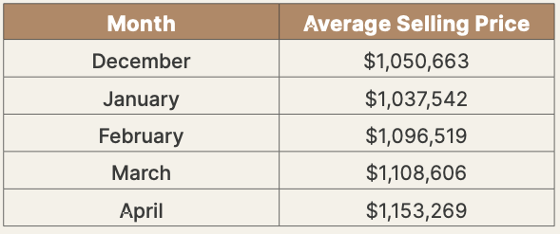As forecast March’s residential resale market continued its upward trajectory, constrained only by available supply and the lack of affordability driven by the high cost of mortgage financing and the requirement to stress-test borrowers. Stress testing means that buyers must qualify at 2 percent higher than the interest rate of the mortgage they are seeking. In March the five-year fixed-term mortgage interest rate was slightly below 5 percent. Buyers, therefore, must qualify at approximately 7 percent.
Notwithstanding these constraints, 6,896 properties were reported sold. March saw the second consecutive monthly increase in sales from the lows of December and January.

February’s 4,765 reported sales represented a 54 percent increase compared to January’s 3,089 sales, while March’s 6,896 sales saw a 45 percent jump in sales compared to February. If the market continues at its current pace April’s sales may come in at close to 8,000 which will exceed the 7,226 reported sales in May 2022, the last month that saw more than 7,000 sales.
Like reported sales, average sale prices also continue to rise.
February’s average sale price was almost 6 percent higher than the average sale price for all properties sold in January, while March’s average sale price at $1,108,606 was 1 percent higher than the price achieved in February. March’s average sale price was the highest achieved since June of 2022. Until the Bank of Canada begins to reduce its benchmark rate, currently at 4.5 percent, average sale prices will increase very moderately. Buyers’ ability to pay higher prices will be constrained by the prevailing punishing mortgage interest rates and the stress testing imposed by the Office of Superintendent of Financial Institutions.
The Bank of Canada is not expected to reduce its benchmark rate until late 2023. If inflation persists the benchmark rate will only start to be lowered in 2024. Collectively most economists affiliated with Canada’s big banks are of the view that even by the end of 2024 the benchmark rate will at best be at 3 percent. By then the “cheap” money available during the pandemic will be a distant memory.
High financing costs and supply are the key factors influencing the residential resale market. In March only 11,184 new properties came to market, far too few to meet demand. Last year 20,061 came to market in March, a year-over-year decline of almost 45 percent. On the back of immigration population growth in Toronto and the surrounding region continues at a record pace increasing the growth of demand against a dwindling level of supply.
This tension, between supply and demand, is nowhere more evident than in March’s resale data. Throughout the greater Toronto region all properties sold (on average) in only 19 days. Not only did they sell quickly, but they sold for 101 percent of their asking price. The first time this has happened since May of 2022. Reported sales in Toronto’s eastern trading areas were even faster: all properties sold in only 15 days and at 107 percent of their asking price. Semi-detached properties in the same trading areas sold in a shocking 12 days and at 113 percent of their asking price. These statistics are comparable to market movement during the height of the pandemic. Those economists that predicted a market bubble and crash are going to be sorely disappointed.
These numbers also speak to increasing levels of competition amongst buyers. Multiple offers are once again becoming the norm, particularly in desirable neighbourhoods. There are simply too many buyers for too few available properties. For example: in the City of Toronto there were only 215 available semi-detached properties for sale at the end of March. In March 202 semi- detached properties were reported sold. Effectively all semi-detached properties that came to market in March sold in the same month. Most semi-detached properties that sold did so in competition. All detached properties sold in only 16 days at 102 percent of their asking price, at an average sale price of $1,708,373.
The only real supply in the City of Toronto is in the condominium sector. At the end of March there were 4,292 properties in total available for sale in the City of Toronto (and 10,120 throughout the greater Toronto area). More than 62 percent of all listings in the City of Toronto (2,675) are condominium apartments. In March 1,410 condominium apartments were sold in the City of Toronto, with another 711 condominium apartment sales in the 905 region. Although condominium apartment sales were not as robust as ground-level property sales, they did sell for 100 percent of their asking price and in 22 days, 3 days longer than the overall average of 19 days on market. The average sale price of all condominium apartments came in at $732,944, and $786,694 for sales in Toronto’s central core, where most condominium apartments are located.
Looking toward April we anticipate further increases in the number of properties reported sold, perhaps as high as 8,000, and average sale prices rising, but moderately, constrained by the high cost of mortgage financing. Barring any unforeseen economic changes this should be the resale market’s pattern for the remainder of 2023. The Toronto and region resale marketplace can be summed up as follows – high levels of demand constrained by low levels of supply and affordability.




